The main indicator for the spatial delineation of a drought event from GDO is the Risk of Drought Impact in Agriculture (RDrI-Agri). It deals with agricultural drought and combines physical indicators of drought hazard with exposure and vulnerability of a region/country, according to the well-known framework: Risk = Hazard x Exposure x Vulnerability.
Therefore, the RDrI indicator synthesizes the severity of a drought with the socio-economic conditions of the affected regions, inferring the magnitude of potential impacts from such event.
All components of the indicator are dynamic and change in time, but hazard in particular, which is updated every ten days.
Since the focus of GDACS is on the humanitarian side of natural disasters, the synthetic index for drought should reflect the humanitarian severity (potential impact) of a given event.
This requirement is satisfied partly by the RDrI-Agri, but the calibration of the indicator is still too loose for GDACS standards and succinctness needs.
So it must be evaluated further in order to narrow down the flagged events only to the most relevant ones and to attribute the GDACS score.
The procedure starts from the global RDrI-Agri indicator, which is extracted automatically at each ten days update and stripped of its lowest risk class, out of three possible (Low, Medium, High).
An algorithm then checks whether the remaining patches on the map (i.e. candidate events) match two simple criteria:
-
• The event is at least one month old (i.e. it is flagged as drought for at least three updates in a row, to avoid very short dry spells)
-
• The event extends over an area of at least 3 cells of 1 decimal degrees of second class according to RDrI indicator or, alternatively, over a single cell with the worst RDrI class. As mentioned, the first class of risk is not considered, no matter for how long it lasted or its extension over an area.
Both requirements must be met to pass the candidate drought event to the next evaluation stage. If so, the algorithm produces a layer of spatial polygons outlining the extent of the drought. If the process identifies a new location previously not flagged as under drought, it tries to associate it to an adjacent existing spatial polygon, before generating a new event. A few attributes are added to the output, including a unique identifier for the event and the country or sub-national region where the drought mostly occurs. Events that spatially split at some point in time are treated as a single continuous event. The algorithm typically produces a good number of individual “drought events”, which necessarily need to be validated and possibly merged before release.
In fact, experts from the drought team evaluate the spatial polygons issued by the unsupervised process. They prioritize higher scores according to RDrI, for which the evaluation is particularly careful. First they circumscribe the area, taking into account geographical and climatic domains. Then, they merge events relatively close in space and linked to the same climatological drivers. Knowing the potential specificity of droughts in certain regions, they look at the various indicators produced by GDO, to characterize the drought. At this stage, at least the green status is attributed to events deemed to be relevant.
For events seemingly severe according to physical indicators, the operators seek for independent validation from national or regional climatological monitoring systems. They also proceed to query the European Media Monitor (EMM, http://emm.newsbrief.eu ) in search for evidence of impacts reported from the ground, in relation to the event. This helps to attribute a numeric score and a subclass to the event (see table), particularly to promote an “orange event” to the worst red category, for which drought indicators cannot provide sufficient information. A single source is not considered enough evidence, unless coming from official sources like governments or associated partners/agencies. A few independent sources of information are required before accepting alleged impacts as valuable for the score attribution.
The icon on the main GDACS+ map is placed at the geographical centroid of the event, taking into account the position of all related polygons.
In addition to RDrI-Agri, other sectorial drought risk indicators will be considered in the future, to address more broadly GDACS scope.
For purely reference terms and by no means for completeness, below in Table 2 is reported a breakdown of the broad categories listed in Table 1 with examples, associating the impact severity of a drought event to the GDACS score value.



